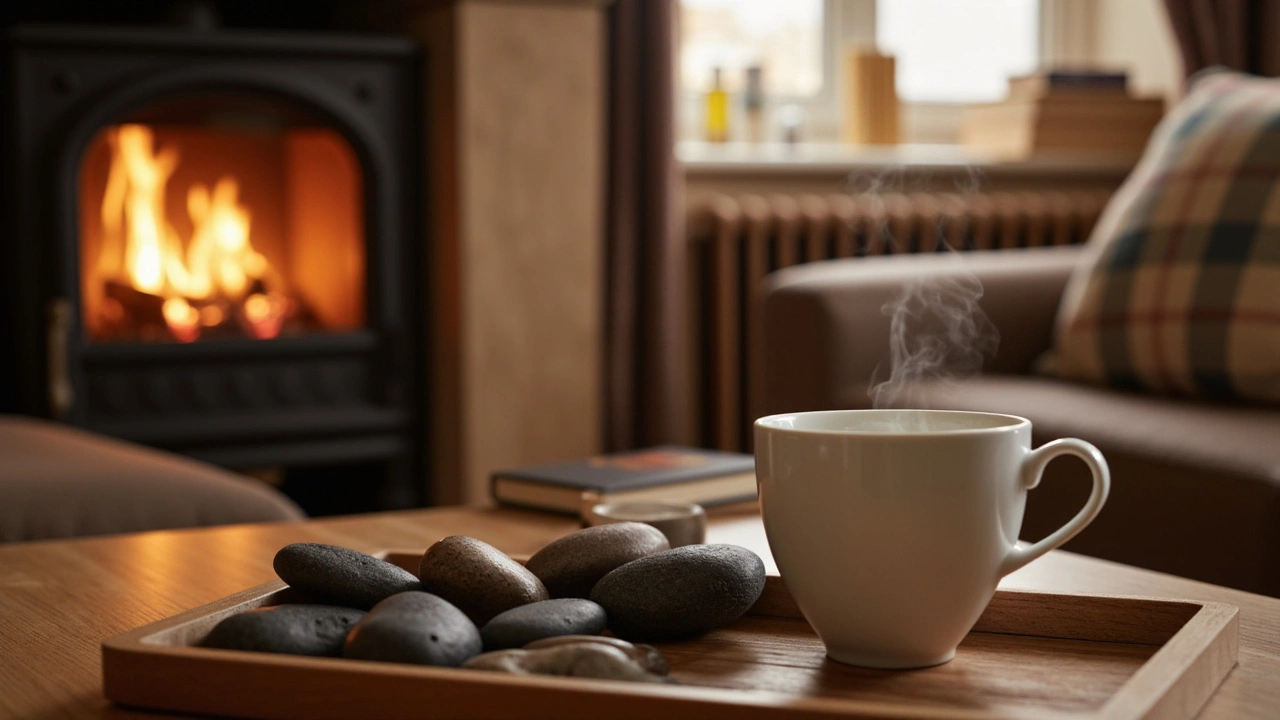Boost Your Wellbeing with Lymphatic Drainage Massage

Ever feel like your body's just not keeping up with your busy life? Lymphatic drainage massage might be the gentle nudge your system needs. This technique focuses on stimulating your lymphatic system, which is like the body's clean-up crew, helping to move toxins out and keep you healthy. Sounds pretty useful, right?
What makes it magical is how it not only supports your body's detox but also dials down stress and swelling—say goodbye to feeling puffy and tense. Imagine wrapping up a hectic day with a massage that promises not just relaxation but a health boost. That's what this is all about. If you're curious how this could fit into your wellness routine, you're in for some enlightening surprises!
- Understanding Lymphatic Drainage
- Why Lymphatic Drainage Matters
- Different Techniques for Women
- Finding the Right Therapist
- What a Session Feels Like
- Ensuring Safety and Comfort
Understanding Lymphatic Drainage
Alright, let's get down to what lymphatic drainage massage really is and why it's such a big deal. Our bodies have this complex network called the lymphatic system. Think of it as a highway for waste removal. It carries lymph fluid filled with waste and toxins to be filtered out. Sounds pretty essential, right?
This system is crucial for keeping us healthy by fighting infections and balancing fluids in the body. Sometimes, though, it needs a little help moving along, and that's where lymphatic drainage massage steps in. By applying gentle, rhythmic pressure, a therapist can stimulate the lymph nodes and pathways, helping your body naturally flush out unwanted stuff.
| Key Function | Description |
|---|---|
| Fluid Balance | Maintains the correct amount of tissue fluid in the body. |
| Immune Support | Keeps the immune system running smoothly to fight diseases. |
It's especially beneficial for women, who often experience hormonal shifts that can affect fluid retention and swelling. Conditions like lymphedema (swelling due to a blockage in the lymphatic system) can also see improvement with regular sessions. It's not just about health, though—many women find it leaves them feeling lighter and more relaxed, which is always a win in our books!
Why Lymphatic Drainage Matters
So, why should we care about lymphatic drainage massage? Well, our lymphatic system is like an unsung hero in our body. It's responsible for flushing out waste and toxins, so when it's not working well, you can feel sluggish and out of sorts.
Think about your immune system as a fortress. The lymphatic system is the moat protecting it, preventing invaders from causing trouble. When the lymph flows freely, it supports your body's defense, meaning you get sick less often. Who doesn’t want that?
But there’s more! This massage can help reduce swelling, which is great if you're up for feeling less puffy. Whether it's bloated feet after a long day or general swelling, smoother lymph flow can help ease these discomforts.
Plus, women's health can greatly benefit from it too. It's said that this technique can ease symptoms of PMS or menopause, making those times a little less annoying. It's like getting an emotional and physical refresh! Clinically, regular sessions are also seen to help with post-surgery recovery, leading to quicker healing.
It's not just about physical benefits, though. Tapping into a few sessions could also mean better relaxation. And who doesn't need an escape from daily stress that's actually doing double duty by boosting health?
Different Techniques for Women
When it comes to knowing how to boost your wellbeing with a lymphatic drainage massage, not all techniques are one-size-fits-all, especially for women. There are a few popular styles to consider, each tailored to meet different needs.
First up, we have the Vodder technique. Developed by Dr. Emil Vodder in the 1930s, this method involves gentle, rhythmic circular movements that aim to stimulate the lymph flow effectively. It’s known for being especially soothing and is often recommended if you're dealing with swelling or lymphedema.
Then, there’s the Foldi technique, a variation that builds on Vodder’s work, but with more emphasis on pressure points. This might be a good pick if you’re looking to really target specific areas. It's great for anyone who wants to see faster results when dealing with post-surgery swelling or persistent fluid retention.
The Leduc method is another popular approach. This style incorporates specific hand movements and 'Call up' and 'Reabsorption' processes, which are intricate manual techniques. If you're someone dealing with chronic cases of lymphedema, this method might just be your go-to.
Aside from these established methods, practitioners often customize their techniques based on individual needs. For instance, they might combine elements of Swedish massage with lymphatic drainage to create a more holistic experience that's not just focused on flow but also relaxation.
Women's health varies greatly with age, lifestyle, and medical history, so it’s essential to talk with your therapist about your specific goals. Whether your aim is reducing bloating, relieving stress, or recovering from surgery, there's likely a technique that can be tailored just for you.
Here's a quick snapshot of these techniques in case you're wondering how they compare:
| Technique | Focus | Best for |
|---|---|---|
| Vodder | Gentle, rhythmic movements | Swelling, relaxation |
| Foldi | Pressure points | Post-surgery recovery |
| Leduc | Manual processes | Chronic lymphedema |
So, take the time to explore these options, and remember, your comfort and results should be at the center of your decision.

Finding the Right Therapist
Choosing the right person for your lymphatic drainage massage is a bit like picking a partner in a three-legged race—you want someone who really gets you! So, how do you find that perfect match when it comes to massage therapy?
Start with credentials. A qualified therapist should ideally be certified in lymphatic drainage techniques. Look for someone who’s received training from reputable institutions, ensuring they’ve got their skills down pat.
Ask around for recommendations. Word of mouth is powerful, and someone in your circle might have a trusted suggestion. Online reviews can also be a goldmine for insights—people love to share their experiences, especially when things go well (or not).
When you find potential therapists, don't hesitate to chat with them before booking. This way, you can gauge whether their vibe matches what you’re looking for. Ask them about their approach to women's health and self-care. Are they patient and open to customizing the massage to your specific needs?
Cost is another factor. While you’re investing in your wellbeing, it doesn’t mean breaking the bank. Compare costs of sessions in your area but remember, cheaper doesn’t always mean better—pay attention to the value you’re getting for the price.
Check whether they follow proper hygiene and care standards. This is crucial for your safety and comfort. You want a therapist who maintains cleanliness and professionalism, so you're comfortable and relaxed during your session.
If you're unsure about where to start, several online platforms list qualified therapists with user reviews, such as Yelp or specialized wellness directories. Happy hunting!
What a Session Feels Like
Picture this: you walk into a calming, softly lit room, ready for your lymphatic drainage massage. The atmosphere is all about tranquility. You might even hear gentle music to help you unwind from the get-go.
The therapist will ask you to lie down on a table, similar to what you'd find in a regular massage, but keep in mind this isn't about deep pressure. It’s about light, rhythmic movements across your skin. They gently push the lymph fluid towards specific lymph nodes, using methods that feel a bit like a soothing feather brushing over you.
One of the cool things? You might notice slight tingling or warmth as your lymphatic system is activated and gets to work. Some people even report a surprising sense of vitality afterward. This massage aims to help your body flush out toxins, so it's like a detox session blended with relaxation.
| Aspect | Experience |
|---|---|
| Pressure Level | Light and gentle |
| Duration | Typically 60-90 minutes |
| Environment | Relaxed and quiet |
| Post-Session Feeling | Refreshed and less bloated |
The session might take about 60 to 90 minutes, depending on your needs. It’s smart to wear comfortable clothes because, afterward, you’ll probably feel like floating home to nap. Just a heads up: drinking water afterward helps optimize the detox effect of the massage, so stay hydrated to boost those benefits.
Ensuring Safety and Comfort
Diving into the world of lymphatic drainage massage can be refreshing, but safety comes first. You’ve got to ensure you're in good hands. Start by checking if the therapist is certified. Most places will have this info ready for you. It’s like verifying a lifeguard at the pool—it just makes sense.
Communication is key. Always tell your therapist about any medical conditions you have. Whether it’s a recent surgery or a chronic issue, being upfront is essential. This ensures the massage is tailored to what your body can handle.
Making yourself at ease is all about comfort. Ensure the room's temperature feels cozy and that you're dressed comfortably—looser clothing is usually ideal. Think of this space as your personal relaxation zone, where nothing should detract from your peaceful experience.
Avoid strenuous activities before and after your massage. Swapping tales of your latest marathon might be fun, but running one right after? Not so much! Grant yourself time to chill and take it easy.
Women's health can be intricate, and keeping hydrated plays a crucial role in lymphatic massage. Sip water before and after the session to keep things flowing smoothly. It's a bit like fueling your car before a long drive.
| Checklist for Booking | Details |
|---|---|
| Therapist Certification | Verify before booking |
| Health Conditions | Discuss with therapist |
| Room Comfort | Ensure comfortable temperature |
| Hydration | Drink water pre-and post-treatment |
When you follow these steps, your lymphatic drainage journey can be a safe and soothing escape, leaving you feeling refreshed and empowered.



